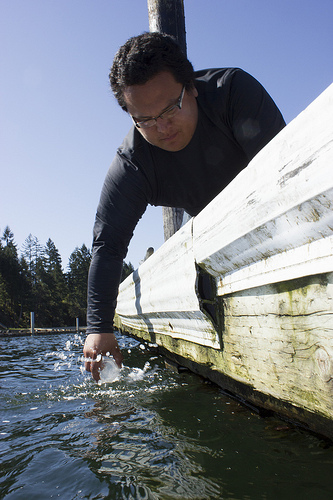By Associated Press
SEATTLE — Despite improvements in the most industrialized and populated areas of the Puget Sound, a new report issued Tuesday by the Washington Department of Ecology shows the overall health of the state’s broadest waterway is declining in at least one way.
Sediment health in the central sound — from just south of Whidbey Island to the Tacoma Narrows — has deteriorated over the past decade, according to the report, which has some scientists who closely monitor the watershed wondering what they’ve been missing.
The study of sediment pulled from the bottom of the sound in 2008 and 2009 found a decline in sediment-dwelling life — known as benthic invertebrates — in 28 percent of the region, compared with 7 percent of the region in results from 1998 and 1999.
The results were surprising in contrast with other recent health checkups for the Puget Sound, which have shown improvements such as a decrease in toxic chemicals. Scientists also have found a decrease in concentrations of lead, mercury, silver, tin and other toxics in the central sound sediment.
It is possible scientists have not been looking deep enough or broad enough for other environmental problems, said Rob Duff, manager of the Ecology Department’s environmental assessment program.
“We don’t measure everything. We measure dozens and dozens of chemicals we are concerned about,” Duff said, adding, “There are thousands and thousands of chemicals in commerce today.”
Emerging contaminants such as pharmaceuticals and personal care products may be responsible for the decline in the number and variety of small creatures within the Puget Sound’s sediment, Duff said, but there are other possible causes.
The decline in the number and variety of small creatures in the sediment also result from natural influences, such as the normal population cycles of sediment-dwelling organisms, or sediment movement and changes in dissolved oxygen, pH and ammonia levels in the water above the sediments.
“One report only tells you a piece of the puzzle,” cautioned Jan Newton, an oceanographer from the University of Washington who was not involved in this Ecology Department study.
The health of Puget Sound is so multi-faceted — from toxics to habitat to climate change — it’s difficult to talk about its overall health, she said, adding, “definitely, there’s reason for concern.”
Meanwhile, the health of Elliott Bay in Seattle and Commencement Bay in Tacoma has been shown signs of improving health, with decreases in chemicals found and water chemistry overall.
That suggests years of port cleanup and storm water management seem to be working, said Maggie Dutch, lead scientist for the sediment monitoring program.
But the contrasting results also suggest the need for more research, she added.
“We’re thinking that there are other things happening,” Dutch said. “It could be things that we also have an influence on.”
This kind of report shows the importance of continuing to monitor the sound as a tool for figuring out what else needs to be done to clean up the water, Ken Dzinbal, who represents the Puget Sound Partnership on the monitoring program.
“We’ve done a pretty good job of addressing big issues like storm water,” he said. “There still might be something else out there that we haven’t addressed.”
— The Associated Press








